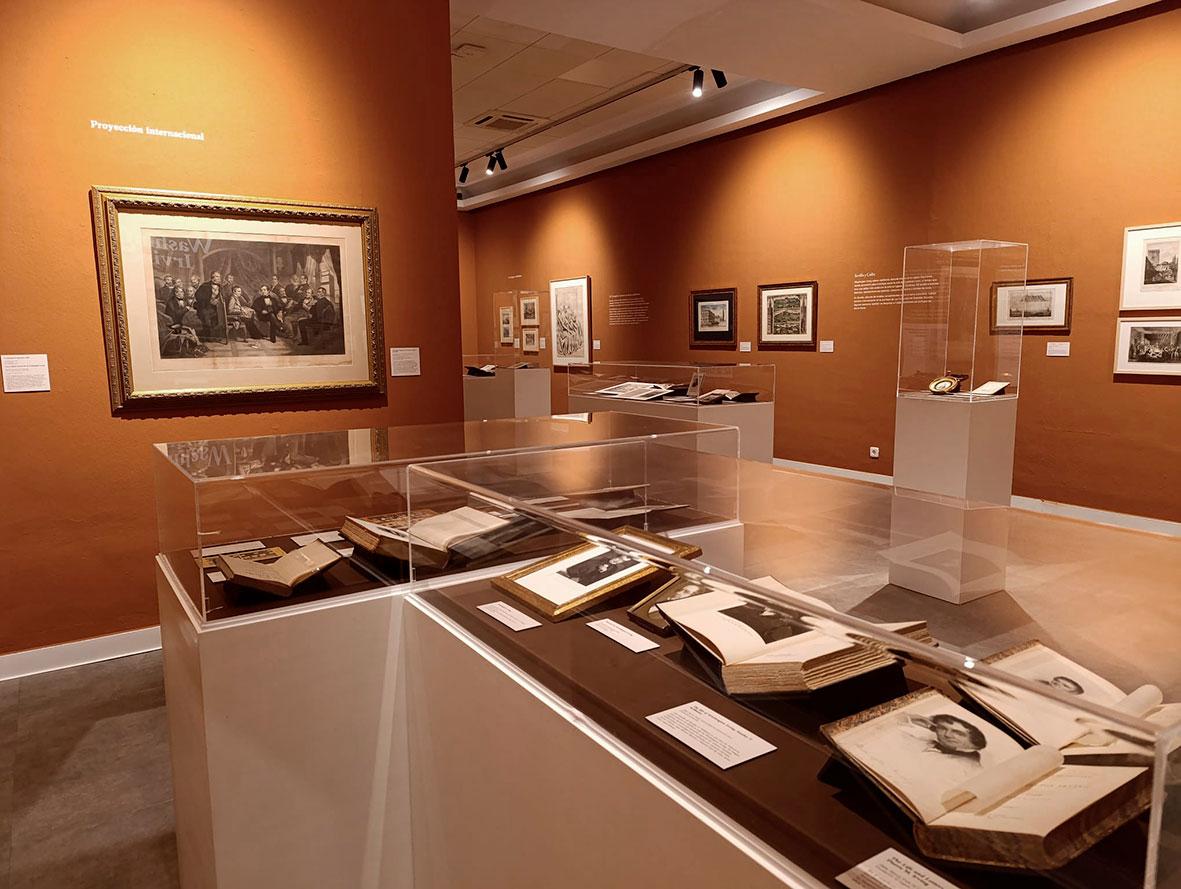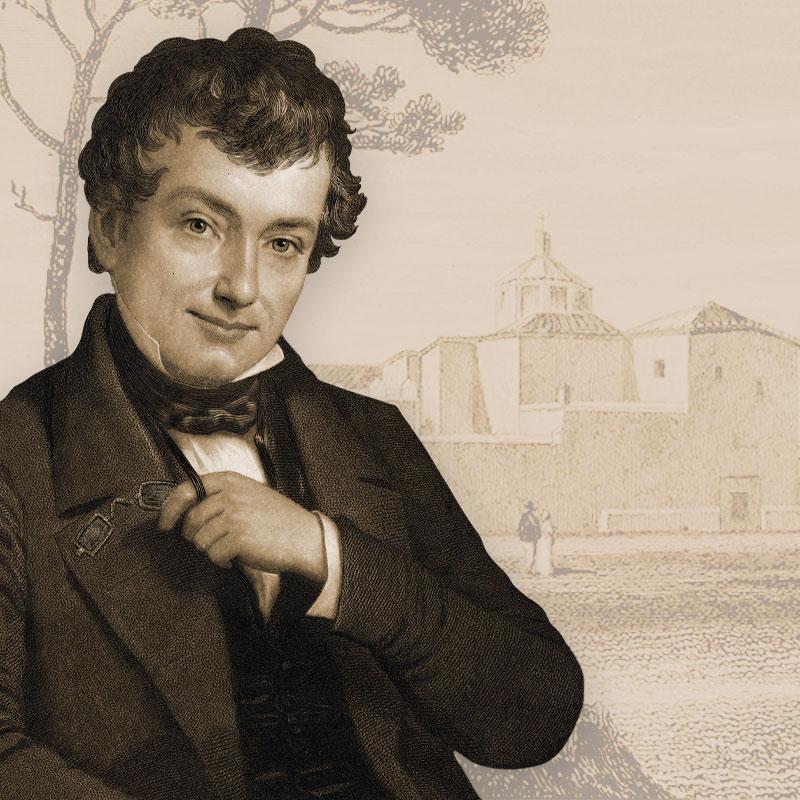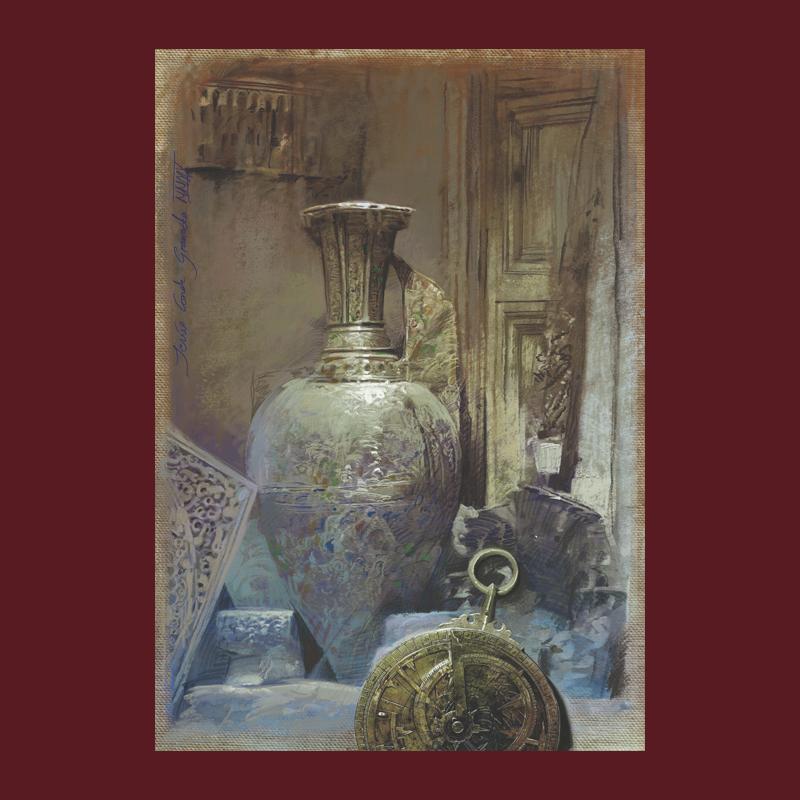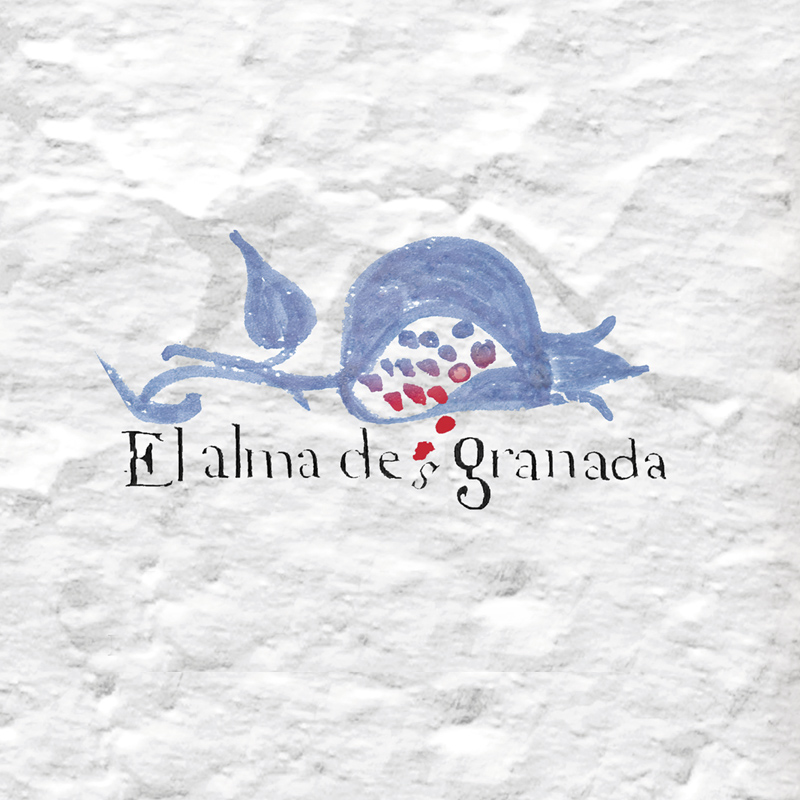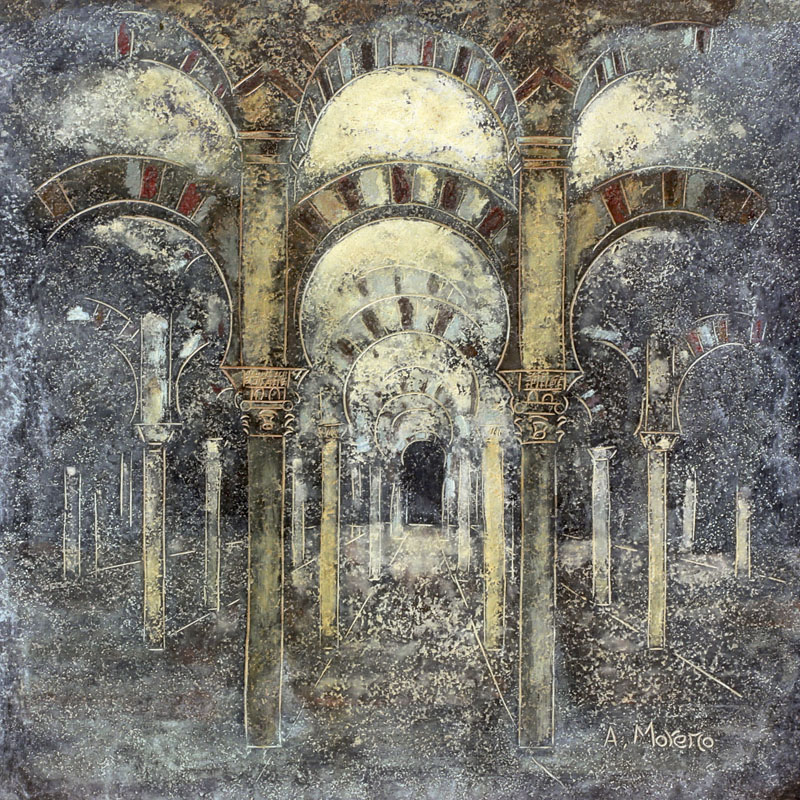Washington Irving
and his fascination with Andalusia, 1828-1829.
The exhibition Washington Irving and his fascination with Andalusia, 1828-1829 explores the figure of Washington Irving, the American writer, scholar, and diplomat, who developed a deep fascination with Spain, and particularly with Andalusia.
Washington Irving was born in New York in 1783 into a family of merchants and began traveling throughout Europe at a young age. He spent nearly eight years in Spain over several periods, including a stay in Andalucía between 1828 and 1829.
The exhibition at the Museum of Huelva, with over 120 contextualized pieces, highlights the personal, historical, and social journey of this universal writer and his close connection with Andalusia.
Coordinated and curated by the Andalusian Public Foundation El legado andalusí, in special collaboration with the Museum of Huelva, the exhibition offers a time-travel experience to 19th-century Andalusia, a captivating, enchanting, and romantic region that so deeply attracted these early foreign travellers.
The exhibition discourse is shaped by original handwritten letters from Irving, along with engravings, lithographs, paintings, stereoscopes, and more. It includes works by artists such as David Wilkie, Charles Robert Leslie, Alexandre de Laborde, Jenaro Pérez Villamil, Vázquez Díaz, Justin Taylor, Girault de Prangey, James Cavanah Murphy, etc. Additionally, the exhibition displays rare bibliographic editions and first editions of Washington Irving’s works, including The Life and Voyages of Christopher Columbus (1828), The Chronicle of the Conquest of Granada (1829), and Tales of the Alhambra (1832), among others.
This thoughtfully curated exhibition also highlights Washington Irving’s pioneering journey to the Huelva region in August 1828, attracted by his desire to personally explore the Columbian Sites. At the time, these locations were far off the beaten path for foreign travellers, making his visit particularly memorable and gratifying. Accompanied by a descendant of the Pinzón family, Irving visited several sites, including the Convent of La Rábida.
Following this visit, Irving wrote a pioneering work titled The Voyages and Discoveries of the Companions of Columbus. Published in English in 1831, this book features a captivating and emotional narrative titled A Visit to Palos, in which he describes his personal journey through the Huelva region.
A journey into the past, led by Washington Irving in the 19th century, which meant a giant step in promoting and spreading Andalusia’s historical and cultural heritage on the international scope.








